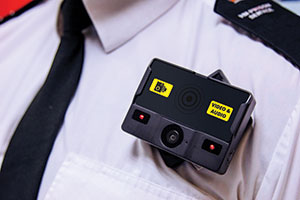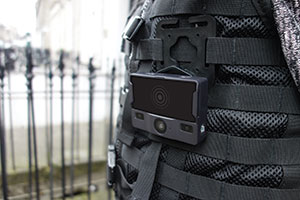The Museums Association Esmee Fairburn Collection Fund has awarded £120,000 to the National Justice Museum to introduce its unique 200-year-old HM Prison Service collection to a wider audience.
The funding supports a three-year project ‘Ingenuity, Creativity, Hope’ involving people in… more
Each year there are nearly 6000 reported incidents of assaults on prison officers within English and Welsh prisons, 700 of which resulted in serious injury last year. With figures of incidents rising by a third in 2016, the protection of staff and prisoners is high on the government’s agenda.
Statistics from the Ministry of Justice indicate that prisoner-on-prisoner assaults have, too, risen by a third in the last year, prompting comments from past Justice Secretary Liz Truss around prison safety and reform, and from the Prison Reform Trust who printed that “people in prison, prisoners and staff, are less safe than they have been at any other point since records began.” In the year to March 2017, there were 344 deaths in our prisons, the highest number on record.
As part of UK-wide reform, the introduction of Body Worn Cameras within Her Majesty’s Prison Service in England and Wales, and subsequently in Northern Ireland and Scotland, was seen to be an effective, safe and scalable measure for tackling some of the abusive behaviour within the service.
Edesix Supplies HMPS With Body Worn Cameras
Body Worn Cameras (BWC) have, for some time now, acted as deterrents to, and evidence-capturing devices of, aggressive and abusive behaviour in industries such as the police, civil enforcement for Local Authorities, and within the private security sector. Simple to use, unobtrusive to wear, and requiring little training, these devices are designed to capture un-biased audio and video footage of incidents, providing valuable evidence and records when required.
With its roll-out now complete to HMPS across England and Wales, Edesix Ltd. is the preferred supplier for the UK Prison Service nationally. The company’s VideoBadge Body Worn Camera, iconic for its front facing ID badge, is the camera of choice for prison officers. However, it is the sophisticated solution provided by the company, inclusive of bespoke hardware and software, which benefits the service most.
The hardware and infrastructure provided by Edesix ensures efficient workflow and ease of use for prison officers, and those managing the data. Using a combination of DockControllers (a device which allows up to 84 VideoBadges to be connected, assigned and managed from one instance of VideoManager) and MicroServers for data storage; large estates of cameras can be simply rolled-out and centrally managed.
Although complex in its design, the Edesix solution ensures that the day to day operation of prison-wide BWCs is simple to manage, unobtrusive for staff, and easily scaled upon demand. The cameras worn by prison officers are capable of recording up to eight hours of footage including audio and come with flexible mounting options for uniforms. The entire solution is secure and encrypted, meaning that even in the worst circumstance, a lost or stolen camera’s footage cannot be viewed, deleted or shared.
In order for the BWC deployment to work for prisons, as is the case with many other sectors, daily routines and workflows were examined so as to ensure collecting and using BWCs would be as simple as possible for staff. The majority of services using  Edesix cameras utilise RFID cards for swipe-and-assign collection of BWCs. In doing this, the user of the camera need do nothing more than swipe their ID card over the RFID reader, at which time the system automatically allocates a fully-charged BWC to that user. They then un-dock the camera which flashes and bleeps at them, with the camera remaining assigned to that user until it is re-docked and footage is offloaded. There is no requirement to log into the system manually, nor assess the status of the suite of badges before choosing one to use; this deployment method is efficient, secure, and ensures only authorised BWC users can obtain a camera – BWCs not allocated are incapable of recording footage.
Edesix cameras utilise RFID cards for swipe-and-assign collection of BWCs. In doing this, the user of the camera need do nothing more than swipe their ID card over the RFID reader, at which time the system automatically allocates a fully-charged BWC to that user. They then un-dock the camera which flashes and bleeps at them, with the camera remaining assigned to that user until it is re-docked and footage is offloaded. There is no requirement to log into the system manually, nor assess the status of the suite of badges before choosing one to use; this deployment method is efficient, secure, and ensures only authorised BWC users can obtain a camera – BWCs not allocated are incapable of recording footage.
Increased Security
The aspect of security was key for those prison services utilising BWCs. With the original impetus for procuring the devices stemming from a need to protect those within prisons, BWCs have proven to de-escalate situations which, in the past, would have almost certainly resulted in verbal if not physical abuse of staff. Feedback from prisons using the devices shows that staff feel more confident in asserting themselves during conflict, and prisoners have verbalised the benefits to them, stating that it enforces true and just accounts of incidents, placing responsibility and consequence on those at fault.
This theme of increased security continues throughout the utilisation of BWCs into the safe viewing, storing and sharing of footage. This aspect of BWC deployment lies in the back-end management of footage; ranging from authorisation to view footage through to the safe storage and deletion policies of captured video. Through Edesix’s VideoManager software, tiered user-levels can be easily created, providing varying access authorisation levels for users. Those with basic access are simply authorised to record and offload video, whereas those with higher levels of access can view, share and manage footage for evidential purposes – all of which is stored in a non-editable audit log. As with all other industries serviced by Edesix, standard deletion policies are encouraged to be implemented, ensuring non-evidential footage is destroyed in line with industry regulations.
Body Worn Cameras Proven to Save Money
As with UK police forces, the deployment of BWCs is also hoped to produce cost savings as their use escalates within UK Prisons. It was proven that, in one small trial deployment within Police Scotland over the course of a year, 697 officers and 453  civilians were not required to attend court due to the evidence gathered using BWC, with the number of upheld complaints against officers wearing BWCs dropping to zero. With the use of BWCs expanding significantly within UK Police Forces, these numbers have been replicated across the country. The reduction in the time taken to affect justice significantly reduces costs associated with Officers spending time in court and away from their daily duties. This example can quite clearly be replicated within prisons, reducing the duration of time a prison officer will spend suspended whilst an accusation against them is investigated. Statistics published towards the end of 2016 indicate that compensation claims paid to prisoners and guards reached £100m in the past six years. By introducing BWCs, false accusations will reduce, and escalated incidents have been proven to decrease.
civilians were not required to attend court due to the evidence gathered using BWC, with the number of upheld complaints against officers wearing BWCs dropping to zero. With the use of BWCs expanding significantly within UK Police Forces, these numbers have been replicated across the country. The reduction in the time taken to affect justice significantly reduces costs associated with Officers spending time in court and away from their daily duties. This example can quite clearly be replicated within prisons, reducing the duration of time a prison officer will spend suspended whilst an accusation against them is investigated. Statistics published towards the end of 2016 indicate that compensation claims paid to prisoners and guards reached £100m in the past six years. By introducing BWCs, false accusations will reduce, and escalated incidents have been proven to decrease.
With the largest deployment still in its infancy, and further roll-outs of BWCs planned within the UK’s prison services, the data associated with the utilisation of BWCs are still to come. However, it is pleasing to see that the early-indicators point towards reduced violence, increased staff satisfaction, and improved incident management within our jails.
For more information visit www.edesix.com



